- Home
- Agatha Christie
Elephants Can Remember Page 21
Elephants Can Remember Read online
Page 21
Of note: The phenomenon of The Mousetrap tends to distract from Agatha Christie’s other stage successes. An adaptation of The Hollow was one such triumph, premiering in Cambridge in 1951 and subsequently playing for over a year in the West End. Poirot, however, is not a character in the stage version — the diminutive Belgian with the oversized personality was replaced by a perfectly neutral Scotland Yard inspector. In her Autobiography, Mrs Christie notes that she wishes she had made a similar swap in the novel — so rich are the characters in The Hollow — but Poirot fans then (The Hollow was a tremendous bestseller) and today would have it no other way.
San Francisco Chronicle (of the novel): ‘A grade-A plot — the best Christie in years.’
26. The Labours of Hercules (1967)
Dr Burton, Fellow of All Souls, sipping Poirot’s Chateau Mouton Rothschild, offers up a rather unkind remark about his host that sets in motion Hercule Poirot’s obsessive, self-imposed contest against his classical namesake: Poirot will accept twelve labours — twelve fiendishly complex cases — and then, at long last, genuinely unshoulder the burdens of the hero: he will retire, and leave the ridding of society’s monsters, the sweeping of its criminal stables, to others. The cases that Poirot engages are every bit as taxing of his mighty brain as were the famous labours imposed by Eurystheus, King of Tiryns, on the Greek demi-god’s brawn, and they make for one of the most fascinating books in the Christie canon. (Poirot solves them all but, of course, retirement remains as elusive as ever.)
Sunday Express: ‘Twelve little masterpieces of detection. Poirot and Agatha Christie at their inimitable best.’
Margery Allingham: ‘I have often thought that Mrs Christie was not so much the best as the only living writer of the true classic detective story.’
San Francisco Chronicle: ‘A finely shaped book, richly devious and quite brilliant.’
27. Taken at the Flood (1948)
A few weeks after marrying an attractive young widow, Rosaleen Underhay, Gordon Cloade dies in the Blitz — leaving Rosaleen in sole possession of the Cloade family fortune. ‘Ill will’ is in the air, generally, with the close of the war, and it positively contaminates the Cloade household. Now that contamination threatens Poirot — in the form of a visit from the dead man’s sister-in-law. ‘Guided’ to Poirot ‘by those beyond the veil,’ she insists that Rosaleen is not a widow at all.Though he is no subscriber to the supernatural, Poirot has indeed heard of the somewhat notorious Rosaleen, and he is drawn, seemingly inevitably, to the case when he reads of the death of one Enoch Arden — who had appeared mysteriously in the village of Warmsley Vale, not far from the Cloade family seat. Poirot must investigate — but does he go to Warmsley Vale to bring Rosaleen to justice, or to spare her being dispatched prematurely to ‘the other side’?
Of note: Taken at the Flood marks the debut of Superintendent Spence, a Poirot sidekick who will feature in three more Poirot novels.
Elizabeth Bowen, The Tatler: ‘One of the best … Her gift for blending the cosy with the macabre has seldom been more in evidence than it is here.’
Manchester Evening News: ‘Told briskly, vivaciously, and with ever-fertile imagination.’
New York Herald Tribune: ‘Don’t miss it.’
28. Mrs McGinty’s Dead (1952)
‘Mrs McGinty’s dead!’ / ‘How did she die?’ / ‘Down on one knee, just like I!’ So goes the old children’s rhyme. A crushing blow to the back of the head kills a real-life Mrs McGinty in her cottage in the village of Broadhinny — Superintendent Spence’s jurisdiction. Then the killer tore up the floorboards in search of …what? Justice presumes a pittance of cash; and justice has condemned James Bentley, her loathsome lodger, to hang for the crime. But Superintendent Spence is not satisfied with the verdict, and appeals to Poirot to investigate — and save the life of the wretch Bentley.
Of note: Crime novelist Ariadne Oliver, of Cards on the Table, returns to help Poirot and Spence solve the crime.
Sunday Times: ‘So simple, so economical, so completely baffling. Each clue scrupulously given, with superb sleight of hand.’
San Francisco Chronicle: ‘The plot is perfect and the characters are wonderful.’
The New York Times: ‘The best Poirot since ... Cards on the Table.’
29. After the Funeral (1953)
Mrs Cora Lansquenet admits to ‘always saying the wrong thing’ — but this last remark has gotten her a hatchet in the head. ‘He was murdered, wasn’t he?’ she had said after the funeral of her brother, Richard Abernethie, in the presence of the family solicitor, Mr Entwhistle, and the assembled Abernethies, who are anxious to know how Richard’s sizable fortune will be distributed. Entwhistle, desperate not to lose any more clients to murder, turns to Hercule Poirot for help. A killer complicates an already very complicated family — classic Christie; pure Poirot.
Liverpool Post: ‘Keeps us guessing — and guessing wrongly — to the very last page.’
30. Hickory Dickory Dock (1955)
An outbreak of kleptomania at a student hostel is not normally the sort of crime that arouses Hercule Poirot’s interest. But when it affects the work of his secretary, Miss Lemon, whose sister works at the hostel, he agrees to look into the matter. The matter becomes a bona fide mystery when Poirot peruses the bizarre list of stolen and vandalized items — including a stethoscope, some old flannel trousers, a box of chocolates, a slashed rucksack, and a diamond ring found in a bowl of a soup. ‘A unique and beautiful problem,’ the great detective declares. Unfortunately, this ‘beautiful problem’ is not just one of thievery and mischief — for there is a killer on the loose.
Times Literary Supplement: ‘An event… There is plenty of entertainment.’
The New York Times: ‘The Christie fan of longest standing, who thinks he knows every one of her tricks, will still be surprised by ... the twists here.’
31. Dead Man’s Folly (1956)
Sir George and Lady Stubbs desire to host a village fete with a difference — a mock murder mystery. In good faith, Ariadne Oliver, the much-lauded crime novelist, agrees to organise the proceedings. As the event draws near, however, Ariadne senses that something sinister is about to happen — and calls upon her old friend Hercule Poirot to come down to Dartmoor for the festivities. Ariadne’s instincts, alas, are right on the money, and soon enough Poirot has a real murder to investigate.
The New York Times: ‘The infallibly original Agatha Christie has come up, once again, with a new and highly ingenious puzzle-construction.’
Times Literary Supplement: ‘The solution is of the colossal ingenuity we have been conditioned to expect.’
32. Cat Among the Pigeons (1959)
A revolution in the Middle East has a direct and deadly impact upon the summer term at Meadowbank, a picture-perfect girls’ school in the English countryside. Prince Ali Yusuf, Hereditary Sheikh of Ramat, whose great liberalizing experiment — ‘hospitals, schools, a Health Service’ — is coming to chaos, knows that he must prepare for the day of his exile. He asks his pilot and school friend, Bob Rawlinson, to care for a packet of jewels. Rawlinson does so, hiding them among the possessions of his niece, Jennifer Sutcliffe, who is bound for Meadowbank. Rawlinson is killed before he can reveal the hiding place — or even the fact that he has employed his niece as a smuggler. But someone knows, or suspects, that Jennifer has the jewels. As murder strikes Meadowbank, only Hercule Poirot can restore the peace.
Of note: In this novel we meet Colonel Pikeaway, later to appear in the non-Poirots Passenger to Frankfurt and Postern of Fate, and we meet the financier Mr Robinson, who will also appear in Postern of Fate and who will show up at Miss Marple’s Bertram’s Hotel.
Daily Express, of Cat Among the Pigeons: ‘Immensely enjoyable.’
The New York Times: ‘To read Agatha Christie at her best is to experience the rarefied pleasure of watching a faultless technician at work, and she is in top form in Cat Among the Pigeons.’
33. The Adventure of the Christmas
Pudding (1960)
‘This book of Christmas fare may be described as “The Chef ’s Selection.” I am the Chef!’ Agatha Christie writes in her Foreword, in which she also recalls the delightful Christmases of her youth at Abney Hall in the north of England. But while the author’s Christmases were uninterrupted by murder, her famous detective’s are not (see also Hercule Poirot’s Christmas). In the title novella, Poirot — who has been coerced into attending ‘an old-fashioned Christmas in the English countryside’ — gets all the trimmings, certainly, but he also gets a woman’s corpse in the snow, a Kurdish knife spreading a crimson stain across her white fur wrap.
Collected within: The Adventure of the Christmas Pudding; ‘The Mystery of the Spanish Chest’; The Under Dog (novella); ‘Four-and-Twenty Blackbirds’; ‘The Dream’; and a Miss Marple mystery, ‘Greenshaw’s Folly.’
Times Literary Supplement: ‘There is the irresistible simplicity and buoyancy of a Christmas treat about it all.’
34. The Clocks (1963)
Sheila Webb, typist-for-hire, has arrived at 19 Wilbraham Crescent in the seaside town of Crowdean to accept a new job. What she finds is a well-dressed corpse surrounded by five clocks. Mrs Pebmarsh, the blind owner of No. 19, denies all knowledge of ringing Sheila’s secretarial agency and asking for her by name — yet someone did. Nor does she own that many clocks. And neither woman seems to know the victim. Colin Lamb, a young intelligence specialist working a case of his own at the nearby naval yard, happens to be on the scene at the time of Sheila Webb’s ghastly discovery. Lamb knows of only one man who can properly investigate a crime as bizarre and baffling as what happened inside No. 19 — his friend and mentor, Hercule Poirot.
The New York Times: ‘Here is the grand-manner detective story in all its glory.’
The Bookman: ‘Superlative Christie ... extremely ingenious.’
Saturday Review: ‘A sure-fire attention-gripper — naturally.’
35. Third Girl (1966)
Hercule Poirot is interrupted at breakfast by a young woman who wishes to consult with the great detective about a murder she ‘might have’ committed — but upon being introduced to Poirot, the girl flees. And disappears. She has shared a flat with two seemingly ordinary young women. As Hercule Poirot — with the aid of the crime novelist Mrs Ariadne Oliver — learns more about this mysterious ‘third girl,’ he hears rumours of revolvers, flick-knives, and bloodstains. Even if a murder might not have been committed, something is seriously wrong, and it will take all of Poirot’s wits and tenacity to establish whether the ‘third girl’ is guilty, innocent, or insane.
Sunday Telegraph: ‘First-class Christie.’
Financial Times: ‘Mesmerising ingenuity.’
36. Hallowe’en Party (1969)
Mystery writer Ariadne Oliver has been invited to a Hallowe’en party at Woodleigh Common. One of the other guests is an adolescent girl known for telling tall tales of murder and intrigue — and for being generally unpleasant. But when the girl, Joyce, is found drowned in an apple-bobbing tub, Mrs Oliver wonders after the fictional nature of the girl’s claim that she had once witnessed a murder. Which of the party guests wanted to keep her quiet is a question for Ariadne’s friend Hercule Poirot. But unmasking a killer this Hallowe’en is not going to be easy — for there isn’t a soul in Woodleigh who believes the late little storyteller was actually murdered.
Daily Mirror: ‘A thundering success… a triumph for Hercule Poirot.’
37. Elephants Can Remember (1972)
‘The Ravenscrofts didn’t seem that kind of person. They seemed well balanced and placid.’
And yet, twelve years earlier, the husband had shot the wife, and then himself — or perhaps it was the other way around, since sets of both of their fingerprints were on the gun, and the gun had fallen between them. The case haunts Ariadne Oliver, who had been a friend of the couple. The famous mystery novelist desires this real-life mystery solved, and calls upon Hercule Poirot to help her do so. Old sins have long shadows, the proverb goes. Poirot is now a very old man, but his mind is as nimble and as sharp as ever and can still penetrate deep into the shadows. But as Poirot and Mrs Oliver and Superintendent Spence reopen the long-closed case, a startling discovery awaits them. And if memory serves Poirot (and it does!), crime — like history — has a tendency to repeat itself.
The Times: “Splendid.”
38. Poirot’s Early Cases (1974)
With his career still in its formative years, we learn many things about how Poirot came to exercise those famous ‘grey cells’ so well. Fourteen of the eighteen stories collected herein are narrated by Captain Arthur Hastings — including what would appear to be the earliest Poirot short story, ‘The Affair at the Victory Ball,’ which follows soon on the events of The Mysterious Affair at Styles. Two of the stories are narrated by Poirot himself, to Hastings. One, ‘The Chocolate Box,’ concerns Poirot’s early days on the Belgian police force, and the case that was his greatest failure: ‘My grey cells, they functioned not at all,’ Poirot admits. But otherwise, in this most fascinating collection, they function brilliantly, Poirot’s grey cells, challenging the reader to keep pace at every twist and turn.
Collected within: ‘The Affair at the Victory Ball’; ‘The Adventure of the Clapham Cook’; ‘The Cornish Mystery’; ‘The Adventure of Johnnie Waverly’; ‘The Double Clue’; ‘The King of Clubs’; ‘The Lemesurier Inheritance’; ‘The Lost Mine’; ‘The Plymouth Express’; ‘The Chocolate Box’; ‘The Submarine Plans’; ‘The Third-Floor Flat’; ‘Double Sin’; ‘The Market Basing Mystery’; ‘Wasps’ Nest’; ‘The Veiled Lady’; ‘Problem at Sea’; ‘How Does Your Garden Grow?’
Sunday Express: ‘Superb, vintage Christie.’
39. Curtain: Poirot’s Last Case (1975)
Captain Arthur Hastings narrates. Poirot investigates. ‘This, Hastings, will be my last case,’ declares the detective who had entered the scene as a retiree in The Mysterious Affair at Styles, the captain’s, and our, first encounter with the now-legendary Belgian detective. Poirot promises that, ‘It will be, too, my most interesting case — and my most interesting criminal. For in X we have a technique superb, magnificent... X has operated with so much ability that he has defeated me, Hercule Poirot!’ The setting is, appropriately, Styles Court, which has since been converted into a private hotel. And under this same roof is X, a murderer five-times over; a murderer by no means finished murdering. In Curtain, Poirot will, at last, retire — death comes as the end. And he will bequeath to his dear friend Hastings an astounding revelation. ‘The ending of Curtain is one of the most surprising that Agatha Christie ever devised,’ writes her biographer, Charles Osborne.
Of note: On 6 August 1975, upon the publication of Curtain, The New York Times ran a front-page obituary of Hercule Poirot, complete with photograph. The passing of no other fictional character had been so acknowledged in America’s ‘paper of record.’ Agatha Christie had always intended Curtain to be ‘Poirot’s Last Case’: Having written the novel during the Blitz, she stored it (heavily insured) in a bank vault till the time that she, herself, would retire. Agatha Christie died on 12 January 1976.
Time: ‘First-rate Christie: fast, complicated, wryly funny.’
Charles Osborne on
Elephants Can Remember
POIROT (1972)
In March 1972, Dame Agatha was approached by the ment of Madame Tussaud’s Wax Museum in London, wished to add her to their collection of wax figures. She herself to be measured with tapes and calipers, and in due a life-size figure of the author took its place in the Museum
In the summer a revised version of the previous year’s play was presented, as Fiddlers Three, and in November The Mousetrap celebrated its twentieth birthday.
A new Poirot novel, Elephants Can Remember, was published in time for Christmas. The impresario Peter Saunders published his memoirs, The Mousetrap Man, and Agatha Christie wrote a friendly Introduction in which she recalled the many occasions on which they ha
d collaborated.
* * *
Elephants Can Remember, although no one realized this at the time of its publication, was to be Poirot’s penultimate case. It was, in fact, the last Poirot novel that Agatha Christie wrote, for the final Poirot, Curtain, which would appear in 1975, was one which she had written during the Second World War with the intention that it be published posthumously as the final case of Hercule Poirot. Elephants Can Remember also marks the last appearance of Ariadne Oliver, who plays a leading part in the investigation.
Mrs Oliver is at her most delightful, and most scatty, in this, her farewell appearance. Her similarity in some respects to her creator has been mentioned several times: like Dame Agatha, Mrs Oliver is no conventional feminist, for she is relieved when a luncheon in honour of celebrated female writers, which she is obliged to attend, turns out not to be confined to female writers. She is as vague as Agatha Christie, too, concerning Hercule Poirot’s address. Dame Agatha has given it in the past both as Whitehaven and as Whitehouse Mansions. Miss Oliver thinks it might be Whitefriars Mansions. Now we shall never know for certain. (Mrs Oliver complains of her new secretary, Miss Livingstone, and bewails the loss of Miss Sedgwick, of whom we have never heard until that moment.) Max Mallowan, in his memoirs, mentions that Mrs Oliver was ‘a portrayal of Agatha herself ’, and adds, somewhat mischievously, that a pretended scattiness was one of Mrs Oliver’s assets.
This is one of those stories about crime committed in the past. In this case, a girl’s father murdered her mother, or perhaps it was the mother who murdered the father. All that is certain is that both parents died, the murderer having committed suicide immediately afterwards. Twelve years later, when the girl is now a young woman engaged to be married, her prospective mother-in-law thinks it important to know who killed whom. The elephants of the title are people whose memories of the events of twelve years earlier are accurate. Mrs Oliver goes on rather tiresomely about elephants never forgetting: it becomes a dreadfully winsome joke between her and Poirot, and at least five of the nine references to it ought to have been deleted.

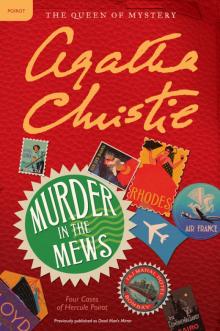 Murder in the Mews
Murder in the Mews Postern of Fate
Postern of Fate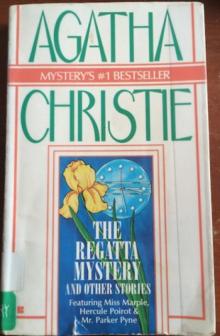 The Regatta Mystery and Other Stories
The Regatta Mystery and Other Stories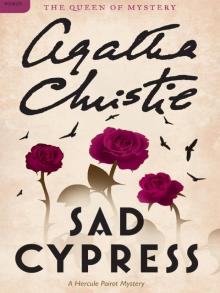 Sad Cypress
Sad Cypress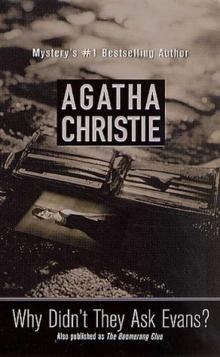 Why Didn't They Ask Evans?
Why Didn't They Ask Evans? After the Funeral
After the Funeral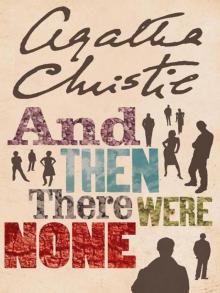 And Then There Were None
And Then There Were None The Witness for the Prosecution
The Witness for the Prosecution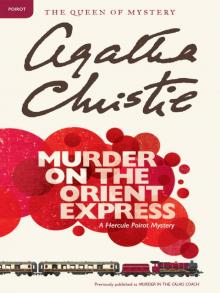 Murder on the Orient Express
Murder on the Orient Express The Seven Dials Mystery
The Seven Dials Mystery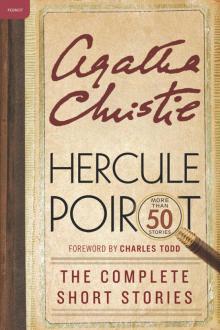 Hercule Poirot: The Complete Short Stories
Hercule Poirot: The Complete Short Stories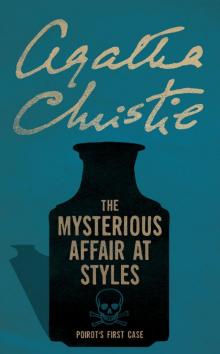 The Mysterious Affair at Styles
The Mysterious Affair at Styles Sleeping Murder
Sleeping Murder Hickory Dickory Dock
Hickory Dickory Dock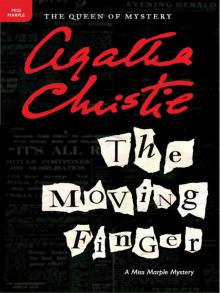 The Moving Finger
The Moving Finger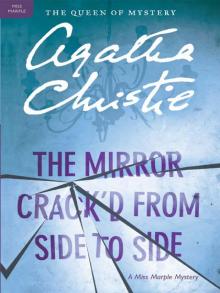 The Mirror Crack'd From Side to Side
The Mirror Crack'd From Side to Side Ordeal by Innocence
Ordeal by Innocence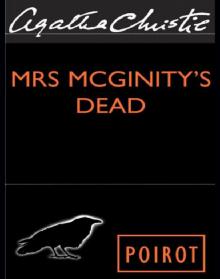 Mrs. McGinty's Dead
Mrs. McGinty's Dead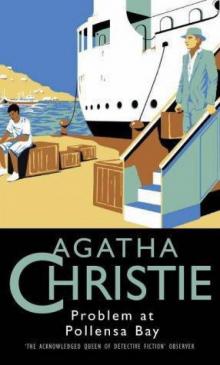 Problem at Pollensa Bay and Other Stories
Problem at Pollensa Bay and Other Stories Death Comes as the End
Death Comes as the End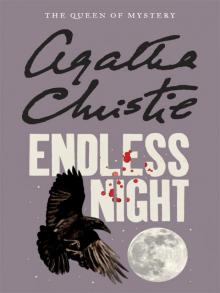 Endless Night
Endless Night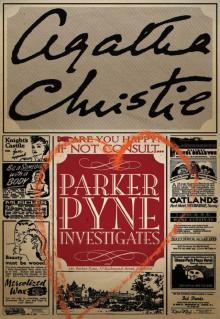 Parker Pyne Investigates
Parker Pyne Investigates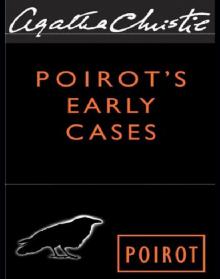 Poirot's Early Cases: 18 Hercule Poirot Mysteries
Poirot's Early Cases: 18 Hercule Poirot Mysteries Murder Is Easy
Murder Is Easy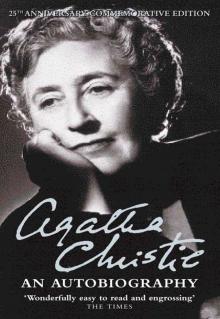 An Autobiography
An Autobiography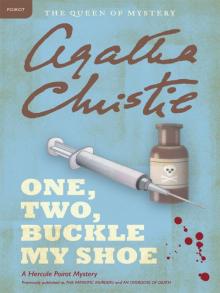 One, Two, Buckle My Shoe
One, Two, Buckle My Shoe A Pocket Full of Rye
A Pocket Full of Rye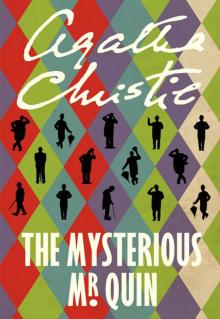 The Mysterious Mr. Quin
The Mysterious Mr. Quin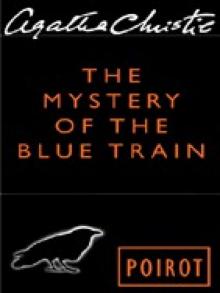 The Mystery of the Blue Train
The Mystery of the Blue Train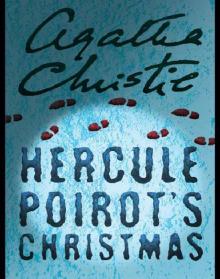 Hercule Poirot's Christmas: A Hercule Poirot Mystery
Hercule Poirot's Christmas: A Hercule Poirot Mystery Cards on the Table (SB)
Cards on the Table (SB) Three Act Tragedy
Three Act Tragedy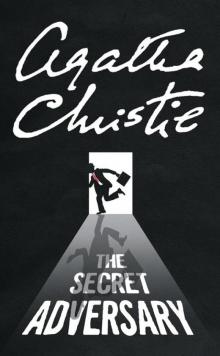 The Secret Adversary
The Secret Adversary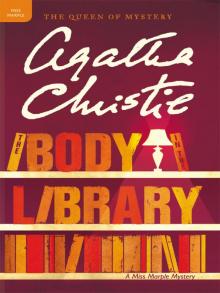 The Body in the Library
The Body in the Library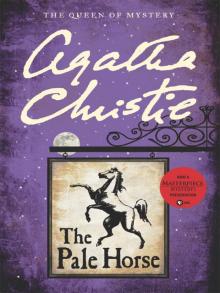 The Pale Horse
The Pale Horse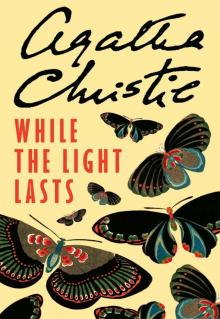 While the Light Lasts
While the Light Lasts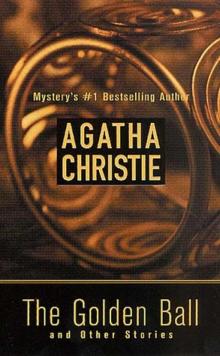 The Golden Ball and Other Stories
The Golden Ball and Other Stories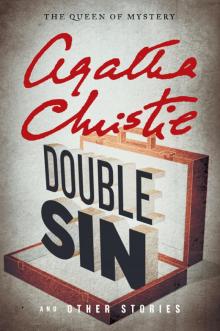 Double Sin and Other Stories
Double Sin and Other Stories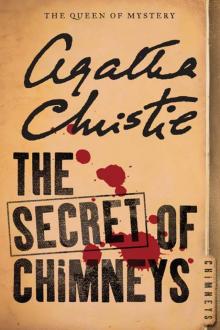 The Secret of Chimneys
The Secret of Chimneys Five Little Pigs
Five Little Pigs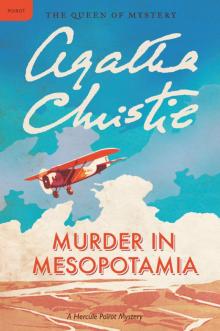 Murder in Mesopotamia: A Hercule Poirot Mystery
Murder in Mesopotamia: A Hercule Poirot Mystery The Mousetrap and Other Plays
The Mousetrap and Other Plays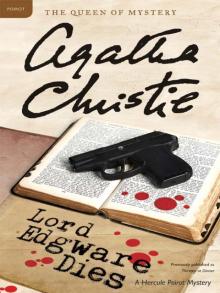 Lord Edgware Dies
Lord Edgware Dies The Hound of Death
The Hound of Death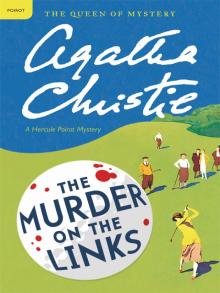 The Murder on the Links
The Murder on the Links A Caribbean Mystery
A Caribbean Mystery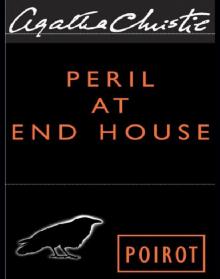 Peril at End House: A Hercule Poirot Mystery
Peril at End House: A Hercule Poirot Mystery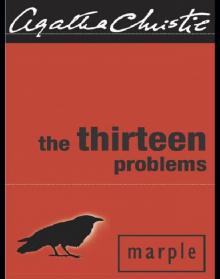 The Thirteen Problems
The Thirteen Problems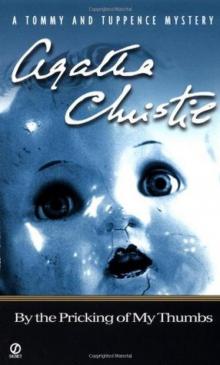 By the Pricking of My Thumbs
By the Pricking of My Thumbs Mrs McGinty's Dead / the Labours of Hercules (Agatha Christie Collected Works)
Mrs McGinty's Dead / the Labours of Hercules (Agatha Christie Collected Works)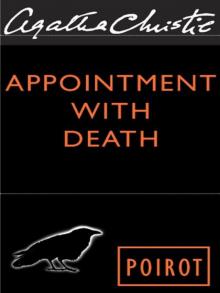 Appointment With Death
Appointment With Death Murder Is Announced
Murder Is Announced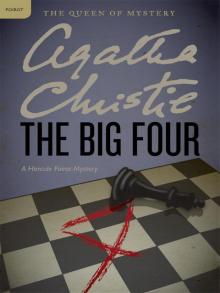 The Big Four
The Big Four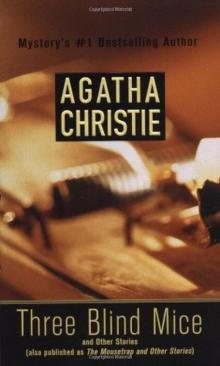 Three Blind Mice and Other Stories
Three Blind Mice and Other Stories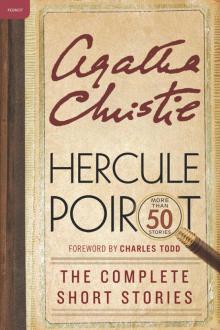 Hercule Poirot- the Complete Short Stories
Hercule Poirot- the Complete Short Stories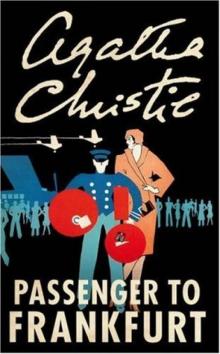 Passenger to Frankfurt
Passenger to Frankfurt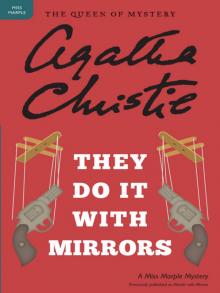 They Do It With Mirrors
They Do It With Mirrors Poirot Investigates
Poirot Investigates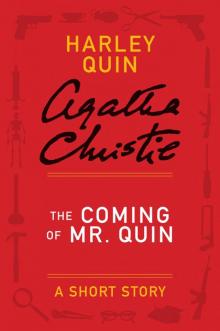 The Coming of Mr. Quin: A Short Story
The Coming of Mr. Quin: A Short Story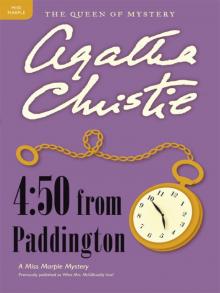 4:50 From Paddington
4:50 From Paddington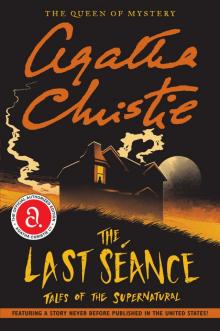 The Last Seance
The Last Seance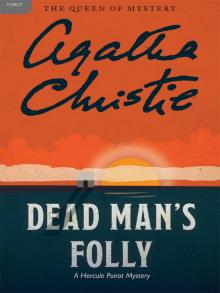 Dead Man's Folly
Dead Man's Folly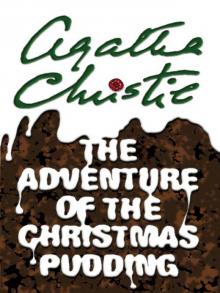 The Adventure of the Christmas Pudding
The Adventure of the Christmas Pudding The A.B.C. Murders
The A.B.C. Murders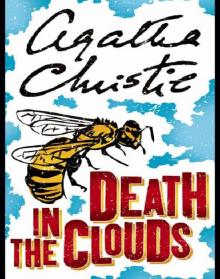 Death in the Clouds
Death in the Clouds Towards Zero
Towards Zero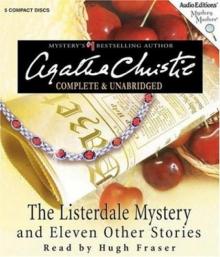 The Listerdale Mystery and Eleven Other Stories
The Listerdale Mystery and Eleven Other Stories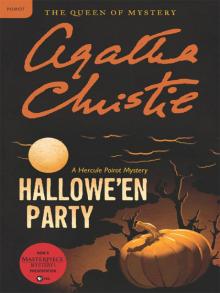 Hallowe'en Party
Hallowe'en Party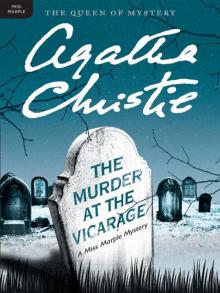 Murder at the Vicarage
Murder at the Vicarage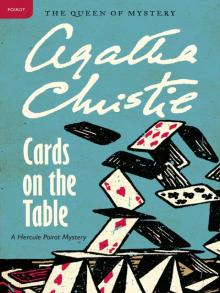 Cards on the Table
Cards on the Table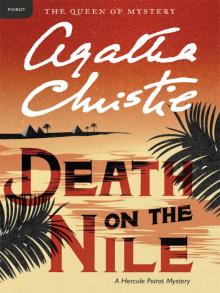 Death on the Nile
Death on the Nile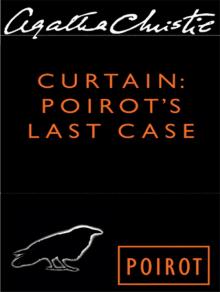 Curtain
Curtain Partners in Crime
Partners in Crime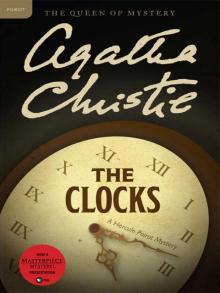 The Listerdale Mystery / the Clocks (Agatha Christie Collected Works)
The Listerdale Mystery / the Clocks (Agatha Christie Collected Works)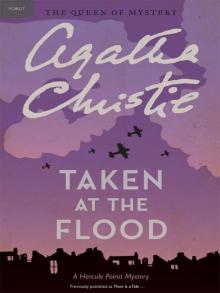 Taken at the Flood
Taken at the Flood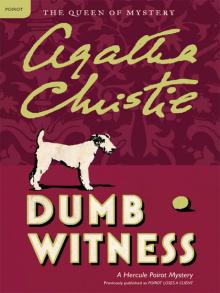 Dumb Witness
Dumb Witness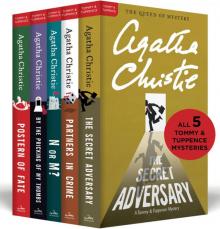 The Complete Tommy and Tuppence
The Complete Tommy and Tuppence Problem at Pollensa Bay
Problem at Pollensa Bay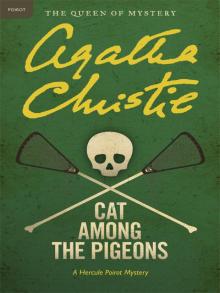 Cat Among the Pigeons
Cat Among the Pigeons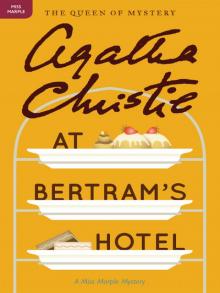 At Bertram's Hotel
At Bertram's Hotel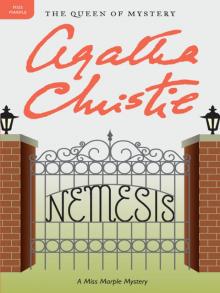 Nemesis
Nemesis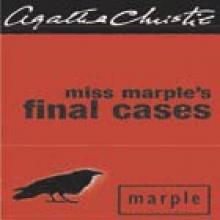 Miss Marple's Final Cases
Miss Marple's Final Cases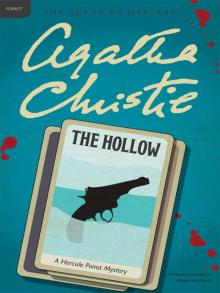 The Hollow
The Hollow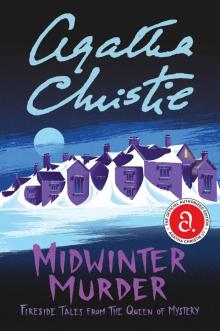 Midwinter Murder
Midwinter Murder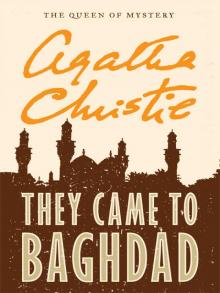 They Came to Baghdad
They Came to Baghdad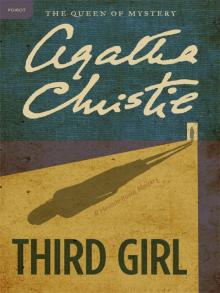 Third Girl
Third Girl Destination Unknown
Destination Unknown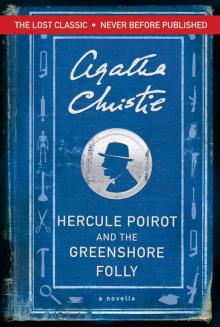 Hercule Poirot and the Greenshore Folly
Hercule Poirot and the Greenshore Folly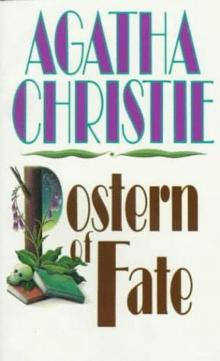 Postern of Fate tat-5
Postern of Fate tat-5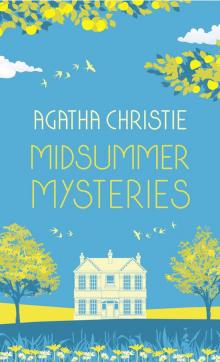 Midsummer Mysteries
Midsummer Mysteries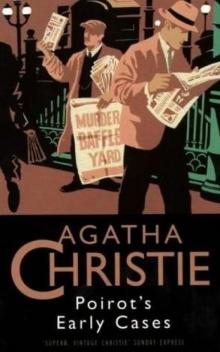 Poirot's Early Cases hp-38
Poirot's Early Cases hp-38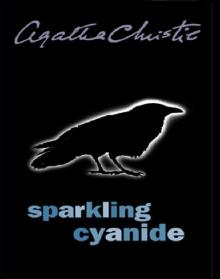 Sparkling Cyanide
Sparkling Cyanide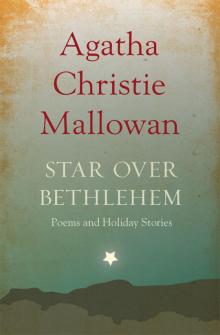 Star over Bethlehem
Star over Bethlehem Black Coffee hp-7
Black Coffee hp-7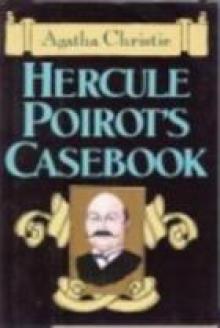 Hercule Poirot's Casebook (hercule poirot)
Hercule Poirot's Casebook (hercule poirot)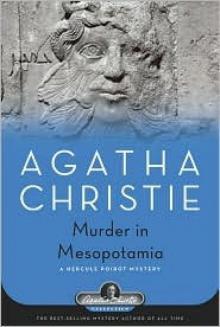 Murder in Mesopotamia hp-14
Murder in Mesopotamia hp-14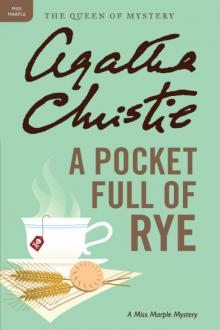 A Pocket Full of Rye: A Miss Marple Mystery (Miss Marple Mysteries)
A Pocket Full of Rye: A Miss Marple Mystery (Miss Marple Mysteries)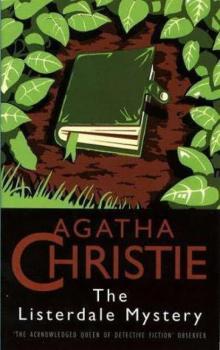 The Listerdale Mystery
The Listerdale Mystery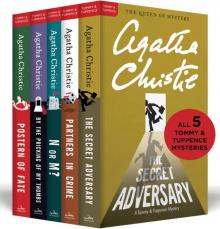 The Complete Tommy & Tuppence Collection
The Complete Tommy & Tuppence Collection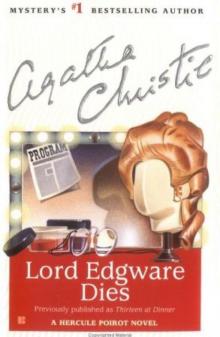 Lord Edgware Dies hp-8
Lord Edgware Dies hp-8 Death in the Clouds hp-12
Death in the Clouds hp-12 Short Stories
Short Stories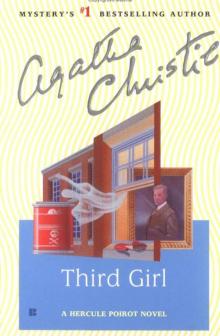 Third Girl hp-37
Third Girl hp-37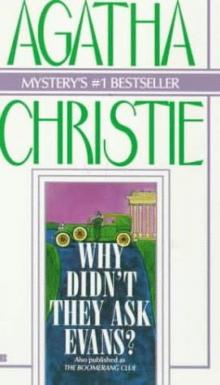 Why Didn't They Ask Evans
Why Didn't They Ask Evans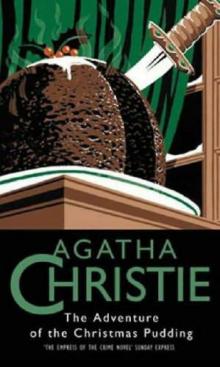 Adventure of the Christmas Pudding and other stories
Adventure of the Christmas Pudding and other stories Cards on the Table hp-15
Cards on the Table hp-15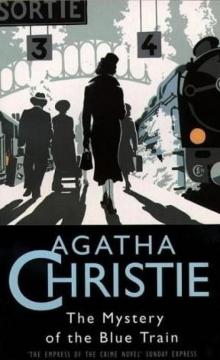 The Mystery of the Blue Train hp-6
The Mystery of the Blue Train hp-6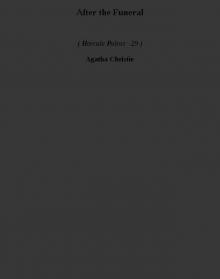 After the Funeral hp-29
After the Funeral hp-29 Poirot Investigates hp-3
Poirot Investigates hp-3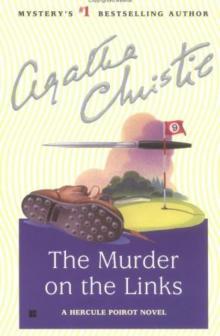 Murder on the Links hp-2
Murder on the Links hp-2 The Mysterious Mr Quin
The Mysterious Mr Quin Curtain hp-39
Curtain hp-39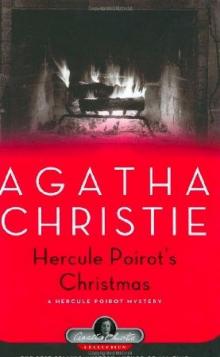 Hercule Poirot's Christmas hp-19
Hercule Poirot's Christmas hp-19 Partners in Crime tat-2
Partners in Crime tat-2 The Clocks hp-36
The Clocks hp-36 Murder, She Said
Murder, She Said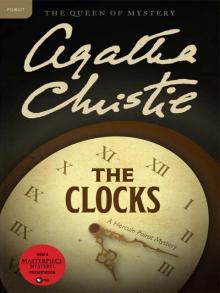 The Clocks
The Clocks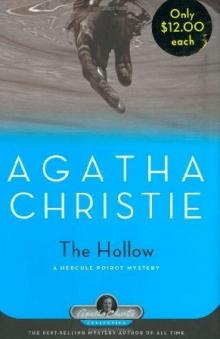 The Hollow hp-24
The Hollow hp-24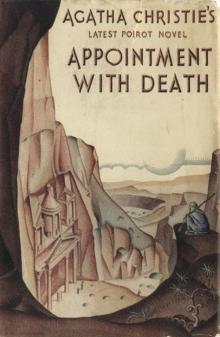 Appointment with Death hp-21
Appointment with Death hp-21 Murder in the mews hp-18
Murder in the mews hp-18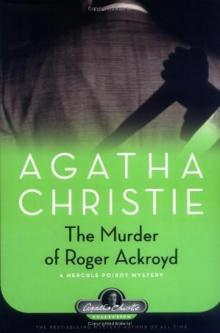 The Murder Of Roger Ackroyd hp-4
The Murder Of Roger Ackroyd hp-4 Dumb Witness hp-16
Dumb Witness hp-16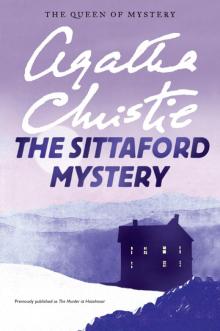 The Sittaford Mystery
The Sittaford Mystery Mrs McGinty's Dead
Mrs McGinty's Dead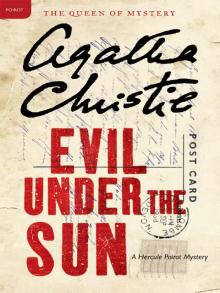 Evil Under the Sun
Evil Under the Sun The A.B.C. Murders hp-12
The A.B.C. Murders hp-12 The Murder at the Vicarage mm-1
The Murder at the Vicarage mm-1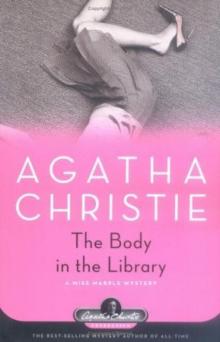 The Body in the Library mm-3
The Body in the Library mm-3 Miss Marple and Mystery
Miss Marple and Mystery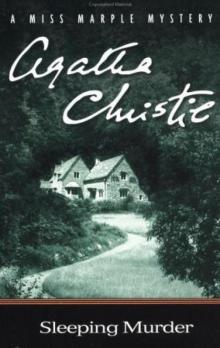 Sleeping Murder mm-14
Sleeping Murder mm-14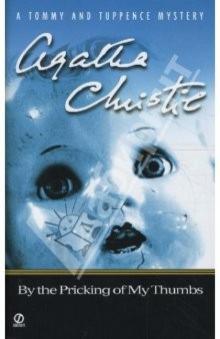 By the Pricking of My Thumbs tat-4
By the Pricking of My Thumbs tat-4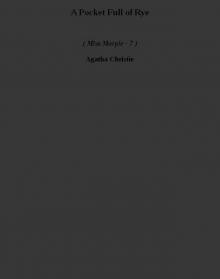 A Pocket Full of Rye mm-7
A Pocket Full of Rye mm-7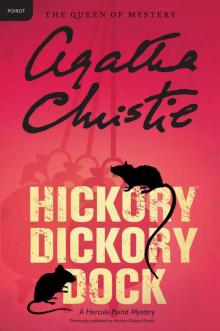 Hickory Dickory Dock: A Hercule Poirot Mystery
Hickory Dickory Dock: A Hercule Poirot Mystery The Big Four hp-5
The Big Four hp-5 The Labours of Hercules hp-26
The Labours of Hercules hp-26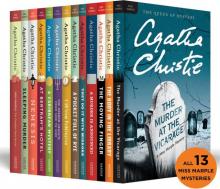 The Complete Miss Marple Collection
The Complete Miss Marple Collection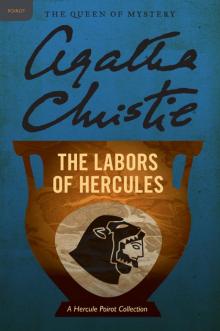 The Labours of Hercules
The Labours of Hercules 4.50 From Paddington
4.50 From Paddington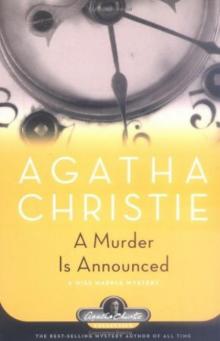 A Murder Is Announced mm-5
A Murder Is Announced mm-5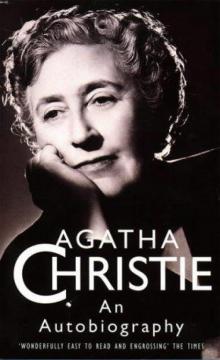 Agahta Christie: An autobiography
Agahta Christie: An autobiography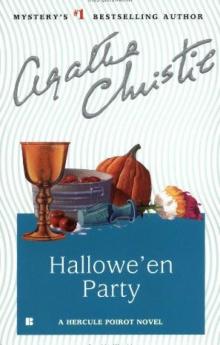 Hallowe'en Party hp-36
Hallowe'en Party hp-36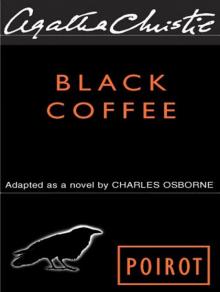 Black Coffee
Black Coffee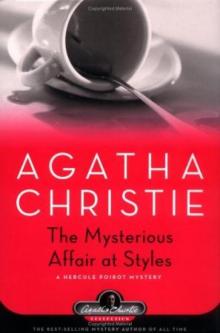 The Mysterious Affair at Styles hp-1
The Mysterious Affair at Styles hp-1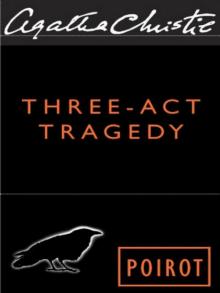 Three-Act Tragedy
Three-Act Tragedy Best detective short stories
Best detective short stories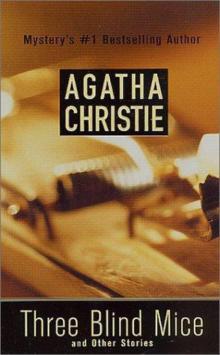 Three Blind Mice
Three Blind Mice Nemesis mm-11
Nemesis mm-11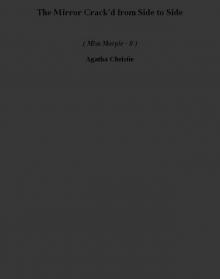 The Mirror Crack'd from Side to Side mm-8
The Mirror Crack'd from Side to Side mm-8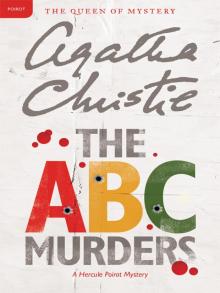 The ABC Murders
The ABC Murders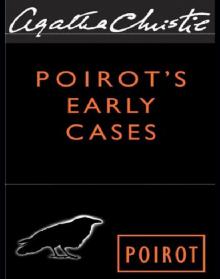 Poirot's Early Cases
Poirot's Early Cases The Unexpected Guest
The Unexpected Guest A Caribbean Mystery - Miss Marple 09
A Caribbean Mystery - Miss Marple 09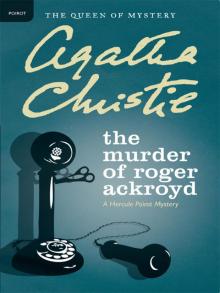 The Murder of Roger Ackroyd
The Murder of Roger Ackroyd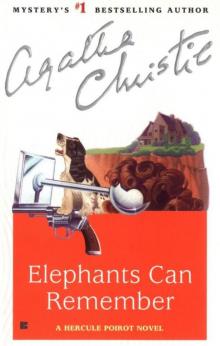 Elephants Can Remember hp-39
Elephants Can Remember hp-39 The Mirror Crack'd: from Side to Side
The Mirror Crack'd: from Side to Side Sad Cypress hp-21
Sad Cypress hp-21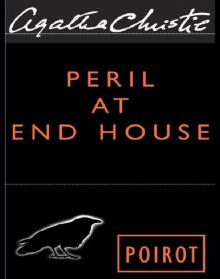 Peril at End House
Peril at End House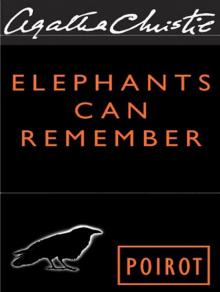 Elephants Can Remember
Elephants Can Remember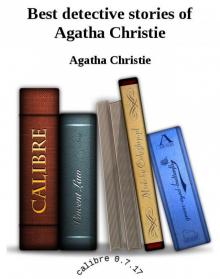 Best detective stories of Agatha Christie
Best detective stories of Agatha Christie Hercule Poirot's Christmas
Hercule Poirot's Christmas The Body In The Library - Miss Marple 02
The Body In The Library - Miss Marple 02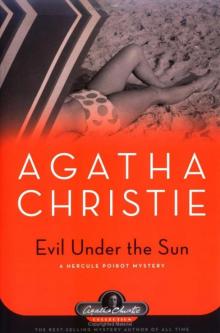 Evil Under the Sun hp-25
Evil Under the Sun hp-25 The Capture of Cerberus
The Capture of Cerberus The Hound of Death and Other Stories
The Hound of Death and Other Stories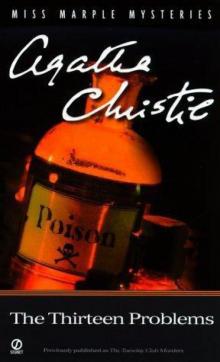 The Thirteen Problems (miss marple)
The Thirteen Problems (miss marple) The Thirteen Problems-The Tuesday Night Club
The Thirteen Problems-The Tuesday Night Club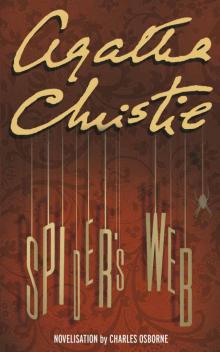 Spider's Web
Spider's Web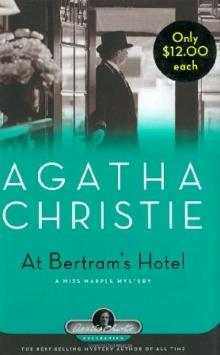 At Bertram's Hotel mm-12
At Bertram's Hotel mm-12 The Murder at the Vicarage (Agatha Christie Mysteries Collection)
The Murder at the Vicarage (Agatha Christie Mysteries Collection)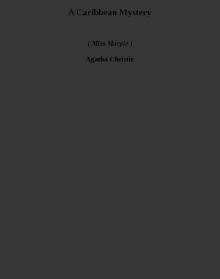 A Caribbean Mystery (miss marple)
A Caribbean Mystery (miss marple) A Murder Is Announced
A Murder Is Announced Clues to Christie
Clues to Christie The Moving Finger mm-3
The Moving Finger mm-3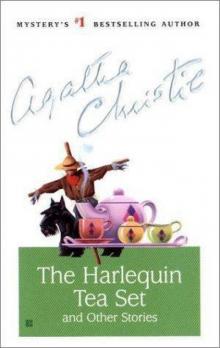 The Harlequin Tea Set and Other Stories
The Harlequin Tea Set and Other Stories Murder on the Links
Murder on the Links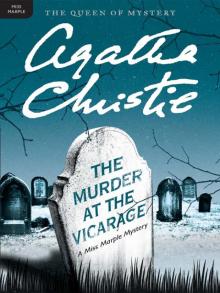 The Murder at the Vicarage
The Murder at the Vicarage N or M tat-3
N or M tat-3 The Secret Adversary tat-1
The Secret Adversary tat-1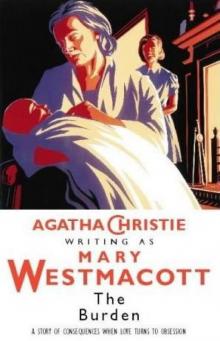 The Burden
The Burden Mrs McGinty's Dead hp-28
Mrs McGinty's Dead hp-28 Dead Man's Folly hp-31
Dead Man's Folly hp-31 Peril at End House hp-8
Peril at End House hp-8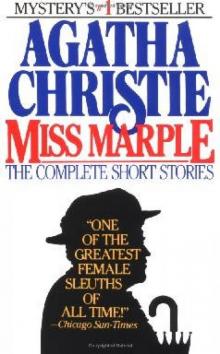 Complete Short Stories Of Miss Marple mm-16
Complete Short Stories Of Miss Marple mm-16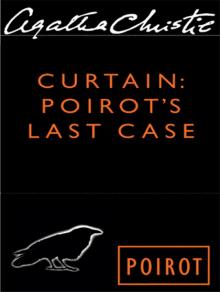 Curtain: Poirot's Last Case
Curtain: Poirot's Last Case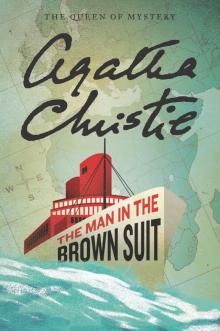 The Man in the Brown Suit
The Man in the Brown Suit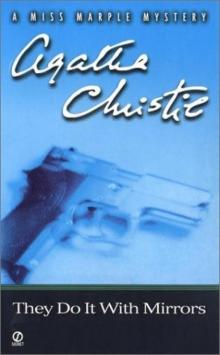 They Do It With Mirrors mm-6
They Do It With Mirrors mm-6